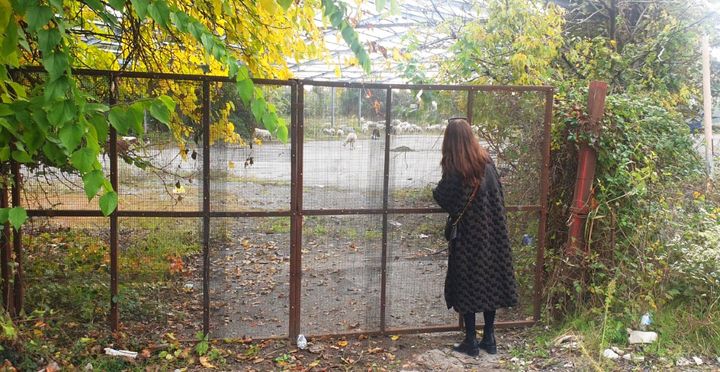Live: At The Moment Of Being Heard @ South London Gallery, 11/07/13

Where so much sound art exhibition is forced into becoming an unbashful orgy of noise and ideas – sound and vision overlapped into a sensory pileup, mangling the work of one artist into the next and drowning a space in light and vibration – At The Moment Of Being Heard is startlingly quiet. In a rare triumph, the exhibition manages to utilise the medium of sound art exhibition in personal, internalised reflection; it is an exhibition for listening and an exhibition about listening, manifesting as a curious blur somewhere between the two.
The point of listening seems to be treated as a sacred – something earned and anticipated, something actively acknowledged and thereafter cherished. With this in mind, Rolf Julius’ gigantic graphic score (Five Red), consisting of 48 paint dots on a large canvas, lingers in a dormant state prior to listening. Or do its implications toward musical structure evoke a certain private, cross-medium listening in themselves? My eyes are drawn to both the inconsistency of the size of the dots, and the five dots coloured in orange instead of black, making allusions toward prominent events or directions in the sonic narrative. Is this process of speculating as to the score’s meaning – coupled with any imaginative flashes of how the score might actually sound – a form of listening? As I approach seven seemingly silent speakers hanging in a line (another Julius work entitled Singing), my thoughts on defining listening are less ambiguous: I begin to hear a low resonance swirling with a thick bubbling sound, as though the speakers are amplifying an active volcano somewhere beneath the gallery floorboards. The act of listening occurs in a slow, upward fade as I work towards the installation, with my attention gradually locking on to a sound that rises up in front of me.

Meanwhile, crys cole’s filling a space with salt (in two parts) presents the act of listening in isolation from the visual that usually barges its way to the foreground. A small mountain of salt rises up from one of the gallery’s floor vents, while at an adjacent empty vent, a speaker emits the sounds of fluid in a spluttering, inconsistent stream. The kinship of listening and seeing is torn in half and resituated in time and space, creating a somewhat dizzying delay that momentarily renders one independent from the other, thus instigating heightened consciousness of each in turn. It’s a subtle and peculiar effect.
Upstairs, Baudouin Oosterlynck examines silence as a presence rather than a negative space, as prominent and defining in a soundscape as vibrations themselves. Variations Of Silence presents several “score-drawings” of silences Oosterlynck encountered during his journeys across Europe, complete with annotations that poetically elude to the drawings’ creative motives (“The ribbed vaults and their inverted ridges guide the silence towards the patient one, avoiding untimely reverberation”). His images consist of abstract shapes and mutated objects – silence visually manifests as a curious shapeshifter and transformative lens through which the “real” is moulded and perceived.
Suddenly, sound leaps out like a firework engulfing the main room. Eli Keszler’s sculpture of wires and motorised beaters emits a sporadic series of metallic farts, immediately consuming the gallery and the attention of those within it. Where all of the other pieces here quietly connect with the individual, Keszler’s work is a proclamation without regard for who is present to hear it; it is sound in its raw and ungraceful flesh, bypassing theory and context for a simple flash of impulsive listening. Once heard (it sounds for about a minute at a time and then lays silent for the next two or three), it is anticipated, hanging from the gallery walls like a predatory spider waiting to pounce. It feels like the centrepoint of At The Moment Of Being Heard: the sensory starting point from which all further thought and speculation stems.

